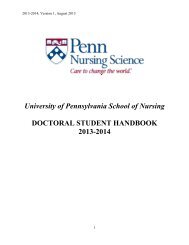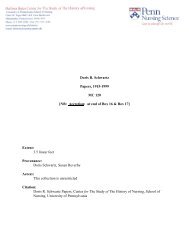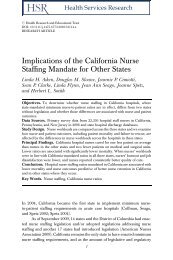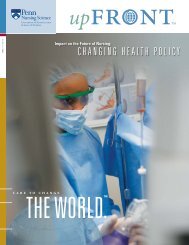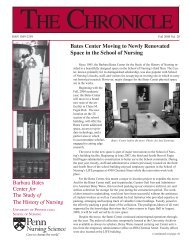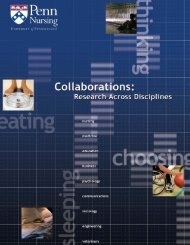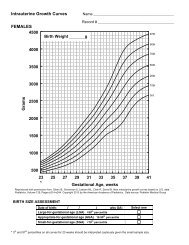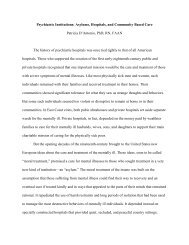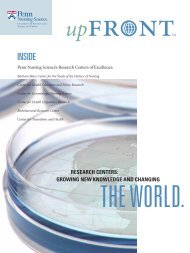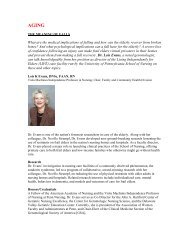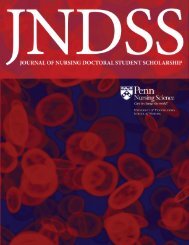10 Landmark Nursing Research Studies - National Institute of ...
10 Landmark Nursing Research Studies - National Institute of ...
10 Landmark Nursing Research Studies - National Institute of ...
Create successful ePaper yourself
Turn your PDF publications into a flip-book with our unique Google optimized e-Paper software.
In a widely reported study from 2002, Dr. Aiken examined job survey<br />
results from over <strong>10</strong>,000 bedside nurses, in conjunction with hospital<br />
discharge abstracts <strong>of</strong> surgical patients. Results <strong>of</strong> the survey found<br />
that over 40% <strong>of</strong> the nurse respondents, who averaged <strong>10</strong> years <strong>of</strong><br />
experience, reported high job dissatisfaction and emotional exhaustion<br />
or burnout.<br />
The hospital data revealed that among post-operative patients, almost<br />
one-quarter experienced a major complication, and 2% died within<br />
30 days <strong>of</strong> admission. Compared to units with an average patient/nurse<br />
ratio <strong>of</strong> 4 to 1, units with lower staffing had a 7% increased risk <strong>of</strong><br />
patient death or failure-to-rescue (the development <strong>of</strong> a serious<br />
post-operative complication) for each extra patient assigned per<br />
nurse. An 8 to 1 ratio, the highest reported among the units in the<br />
study, increased the risk <strong>of</strong> adverse outcomes by 31%. In addition,<br />
poorer staffing intensified nurse dissatisfaction and burnout.<br />
Implications<br />
The round-the-clock presence <strong>of</strong> nurses on hospital units allows for<br />
surveillance <strong>of</strong> patient conditions and early detection and response<br />
to problems. Over the past decade, however, health care industry<br />
cost control measures have led to cuts in the nursing staff at many<br />
hospitals. These cuts, imposed at the same time that the Nation is<br />
experiencing a shortage <strong>of</strong> qualified, trained nurses, are driving some<br />
nurses from the pr<strong>of</strong>ession. Dr. Aiken’s studies are among the first<br />
to document the relationship between nurse staffing on hospital<br />
units and the outcomes <strong>of</strong> patients. A good work environment lowers<br />
nurse burnout and staff turnover, while it improves patient safety<br />
and satisfaction with care.<br />
According to Dr. Aiken, “Clearly, there is a direct relationship<br />
between nurse staffing and patient well-being. Nurse staffing is an<br />
issue that needs priority attention on a national scale. Patients’<br />
lives depend on it.”<br />
Reference<br />
Aiken LH, Clarke SP, Sloane DM, Sochalski J, Silber JH. Hospital nurse<br />
staffing and patient mortality, nurse burnout, and job dissatisfaction. Journal<br />
<strong>of</strong> the American Medical Association. 2002; 288: 1987-1993.<br />
4 <strong>National</strong> <strong>Institute</strong> <strong>of</strong> <strong>Nursing</strong> <strong>Research</strong>





